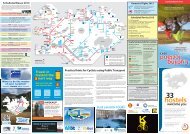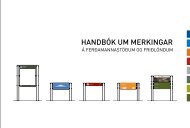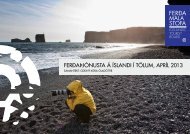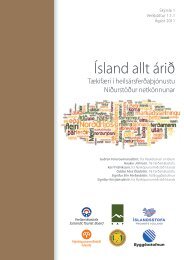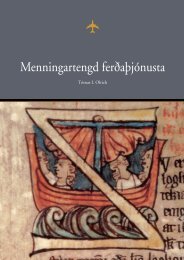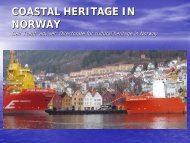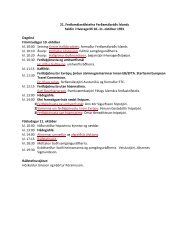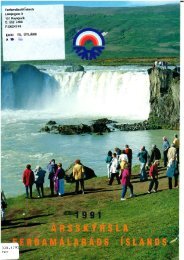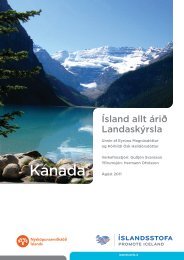Untitled
Untitled
Untitled
You also want an ePaper? Increase the reach of your titles
YUMPU automatically turns print PDFs into web optimized ePapers that Google loves.
can researchers use photography and video cams in their study of tourism<br />
images and how can they develop these techniques also for reporting and<br />
communicating their research findings?<br />
Tourist & tourism imaginationings revisited<br />
These still images on the move, we argue are in fact part of the “new<br />
modality of networking” (Larsen, Urry, and Axhausen 2007) that holds<br />
tourism together, and they do not exist as atoms in a de-materialized<br />
vacuum. They are non-human mediators and transformers, circulating<br />
around dis/connecting the home and mind of tourists with a travel agency,<br />
a hotel, a feeling, an imagination, a destination marketing organization, a<br />
tourist office, a booking sheet, a country, an authentic building, a pool for<br />
children, a hiking trail, and whatever attractions and expectations are at the<br />
real-and-imagined tourist destination.<br />
If that image is reasonably correct, then “what is important for future<br />
research is deciphering the interconnections” (Larsen et al. 2007, p. 259).<br />
That, in turn, requires research methods that are able to construct<br />
information and knowledge about the interconnections of mobile images in<br />
the enactment of the tourism system more broadly conceived and<br />
fundamentally tied to the Earth.<br />
As we have repeatedly emphasised, and tried to show in various<br />
ways, an image is certainly not what it may often appear to be at first sight.<br />
In the vocabulary of semiotics an image can be understood as an<br />
inseparable duo of both signifier and signified, picture and word, meaning<br />
and matter, what we see and what we believe, mind and body somehow<br />
differentiated but simultaneously braided. In other words, to glue signifier<br />
and signified together is part of what it is to be human, and as linguistic<br />
animals humans live in a social, cultural world of meaning. Yet, they also<br />
live on the Earth. In order to emphasise the earthly conditions that faces<br />
humans we can rename them “earthlings”.<br />
And tourists are earthlings too. They live and dwell in-between<br />
meaning and matter, in-between their perceptions and whatever conditions<br />
and facilities that are offered on and by the Earth. What we refer to as<br />
“tourist and tourism imaginationings”, then, concern ways of bringing<br />
meaning and matter together and apart, for particular and specific tourism<br />
and tourist purposes. In other words, imaginationings involve processes of<br />
signification that translate the physical matters of travelling, locations, and<br />
whatever material resources (the Earth) that humans meet as bodies with<br />
90



